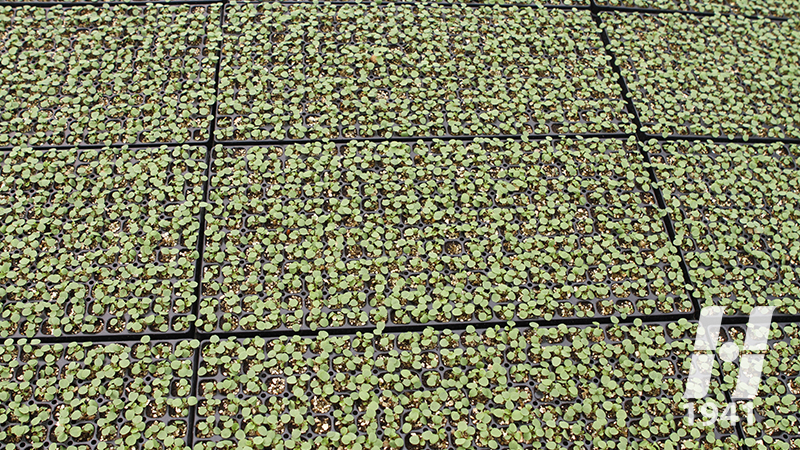New USDA Hemp Rules Proposed: 5 Quick Revelations (UPDATING)
 On Tuesday, Oct. 29, the internet lit up with news that USDA’s long-awaited 2020 hemp production regulations had been made public.
On Tuesday, Oct. 29, the internet lit up with news that USDA’s long-awaited 2020 hemp production regulations had been made public.
With public comments on the proposed rulemaking open through December 30 (link to comment submission), now’s as good a time as any to comb through the 43-page document for interesting nuggets.
Here’s three quick observations we pulled straight from the proposed rule. We’ll be digging even deeper on this in the days and weeks ahead, so stay tuned for more information as we make our way through the document.
1. All 50 States Now Open for Hemp
My first takeaway is that no longer will the ability to produce hemp and its plant fibers be dependent upon which state the producer resides in. While state and tribal production plans and rulemaking will still take legal precedence where already in place or proposed, growers in the handful of states that shied away from developing a Hemp Pilot Program after the 2018 Farm Bill will now be able to obtain a Hemp Producer license directly from USDA. Those applications will start being accepted on Jan. 29, 2020, according to the proposed rulemaking.
(EDITOR’S NOTE: Per USDA’s latest webinar discussing the Interim Final Rule: “Keep in mind that states and Indian tribes may not prohibit the interstate transportation or shipment of hemp as lawfully produced under a state or tribal plan or under a license issued under the USDA plan or the 2014 Farm Bill. Additionally, it also directed USDA to establish a federal plan for those producers in states and tribes that do not have a USDA-approved plan as long as the production of hemp is not prohibited in those states or tribes.)
2. Background Checks On Deck
Additionally, under the new USDA license, if the producer of hemp can be considered a business entity with multiple key participants, all those key participants must be free of felony convictions and submit a criminal history proving so to be approved.
The rulemaking defines a key participant as “person or persons who have a direct or indirect financial interest in the entity producing hemp, such as an owner or partner in a partnership.” The key participant label also encompasses persons “in a corporate entity at executive levels, including chief executive officer, chief operating officer and chief financial officer.”
Thankfully for producers, farm managers and field workers look to be exempt from this requirement, although that could end up being tweaked after the comment period.
3. Standardizing the Sampling and Testing Procedure
When doing our initial background information dig into this market back in September, many growers of this emerging crop expressed trepidation at the vagueness of how the testing process would work. Could a grower submit only fan leaves and other plant material known to generally be low in THC to satisfy the 0.3% of lower THC content requirement? Would USDA only want hemp flower, or the top parts of the plant, submitted for testing?
The proposed rule making clears up some of this confusion.
Though initially short on specifics, the rule states that USDA “will issue guidance on sampling procedures that will satisfy sampling requirements” upon publish of the official rule. Procedures designed to produce a representative sample of the overall THC and CBD content of the crop, including a minimum number of plant specimens that need to be submitted from each lot to be considered a qualifying test, will be issued.
So, that desperately sought clarity is on its way. We’ll just have to wait a couple months.
(EDITOR’S NOTE: From the USDA Webinar detailing the Interim Final Rule: “Sampling must be conducted within 15 days prior to the anticipated harvest, and a USDA approved sampling agent or a federal, state, or law enforcement agent must collect the samples from the flower material of the hemp plant. Crops testing up to 0.5% THC will NOT be considered a negligent violation but the crop will still be required to be destroyed. Any producer receiving 3 negligent violations within a 5-year period will be disqualified from participation in the USDA program.”)
4. Zero Point Three (0.3%) Remains the Standard
The new rule making labels any plant material that tests over the standard 0.3% THC level for hemp as marijuana, and thus under federal law, still an illegal controlled substance. Samples that test over will be flagged by the approved testing lab both with the grower and USDA receiving notification.
Thankfully, USDA will not consider hemp growers as “committing a negligent violation” of the proposed rules if they “use reasonable efforts to grow hemp” and testing “reveals THC concentrations overall don’t exceed 0.5%.” Negligent violations are to be avoided at all costs, considering the rules state that multiple violations “may lead to suspension or revocation of a producer’s license.”
It sounds like growers will need to be very vigilant and purposeful in documenting the various stages of the production process, as we know data is always the best risk management strategy.
5. Crop Over the Limit? You’ll Have to Arrange Disposal
Growers notified via lab results that they have produced biomass exceeding the acceptable hemp THC level must arrange for disposal of the entire lot, or block of plants, represented by the sample. This disposal process must, again, be documented and submitted in reporting to USDA.
And for those wondering, a lot is defined by the USDA as “a contiguous area in a field, greenhouse, or indoor growing structure containing the same variety or strain of cannabis throughout.” So, any block where plants are grouped together by cultivar, or variety or hybrid type, which is quite common in this space, will be considered a lot.
A full, 43-page .pdf of the proposed rules can be accessed here.
Interested parties are encouraged to submit comment on the proposed rules.
Head here to view USDA’s latest webinar breaking down the rule and what it means for participants.
You can submit questions on the program directly to USDA at Farm [email protected].









